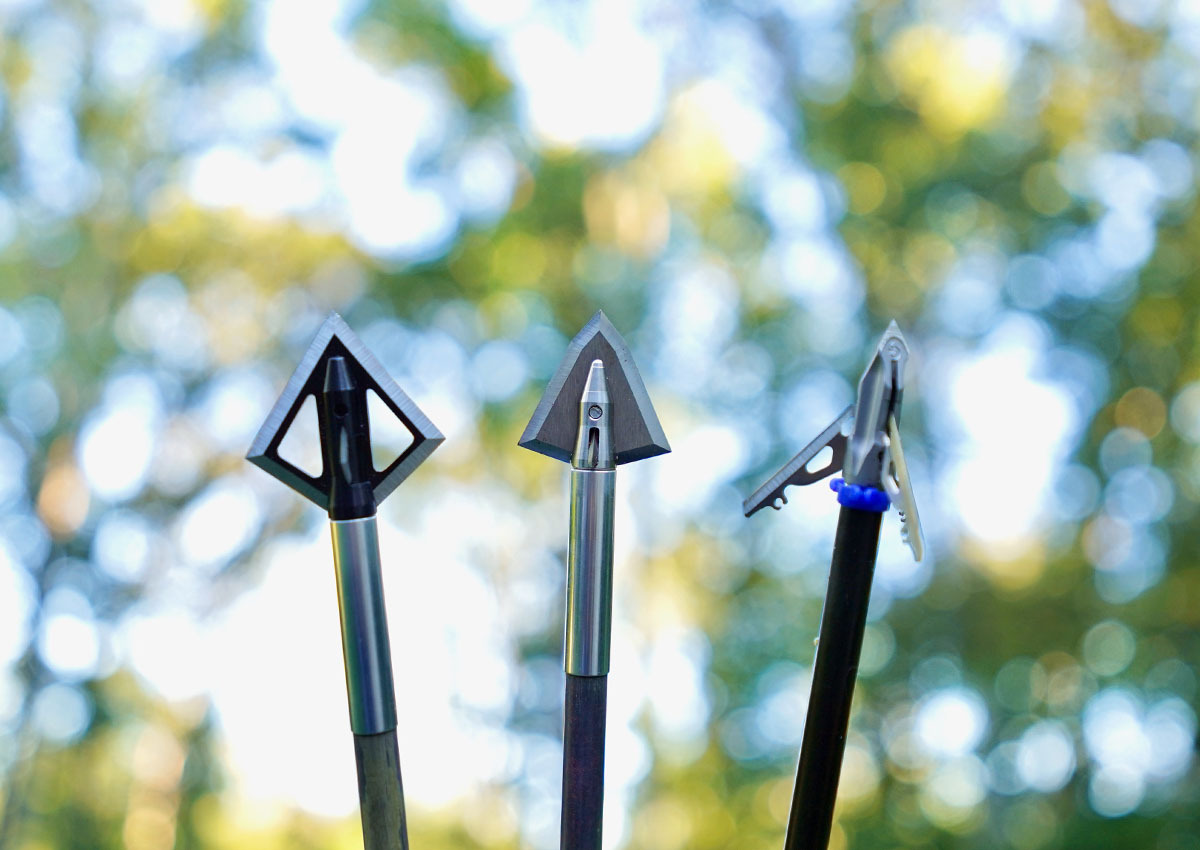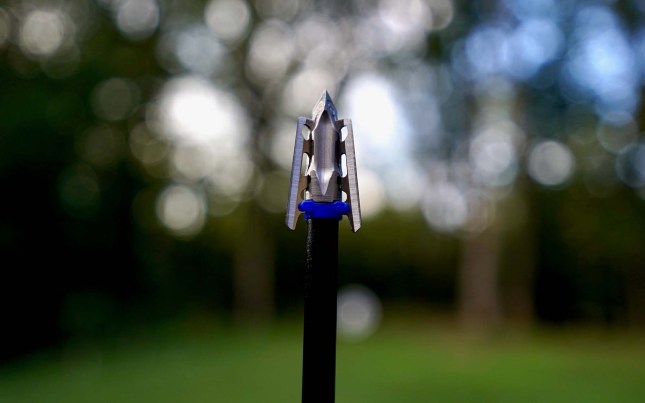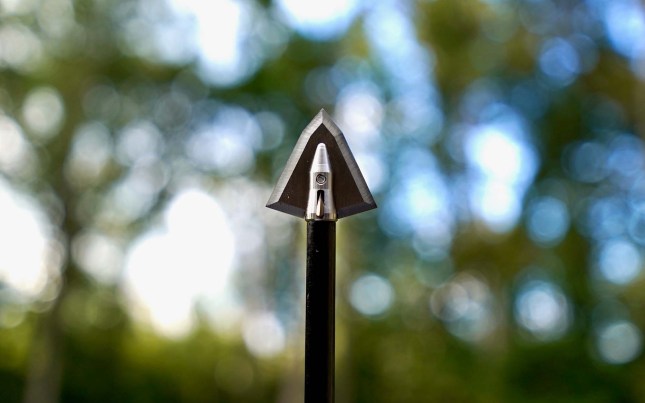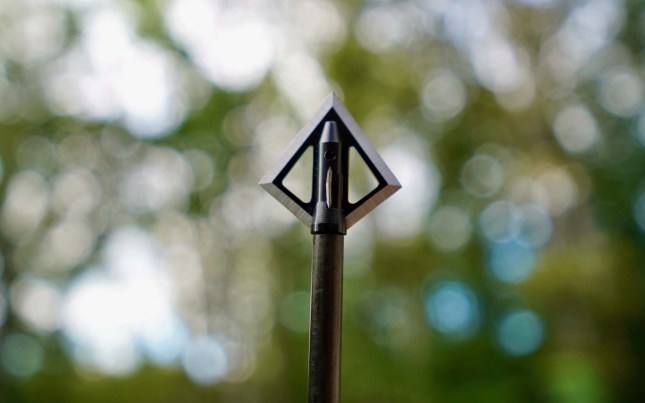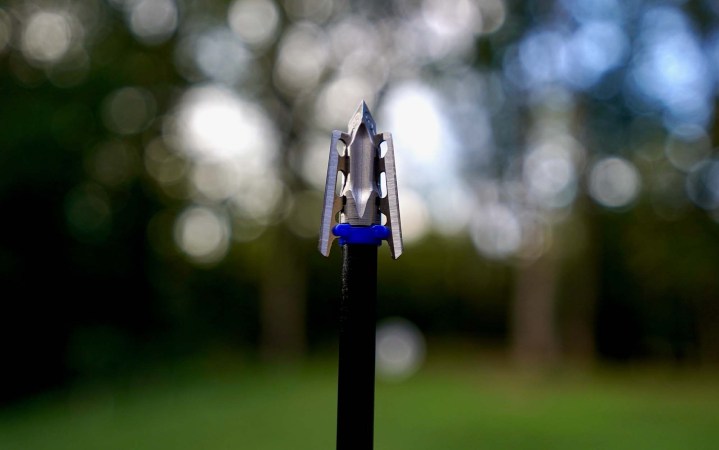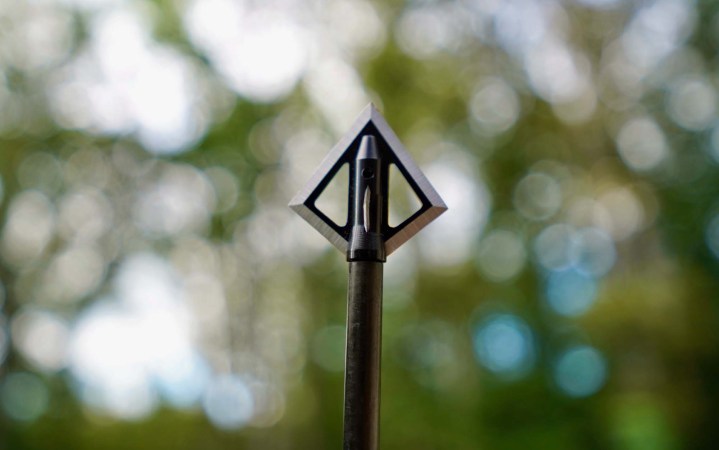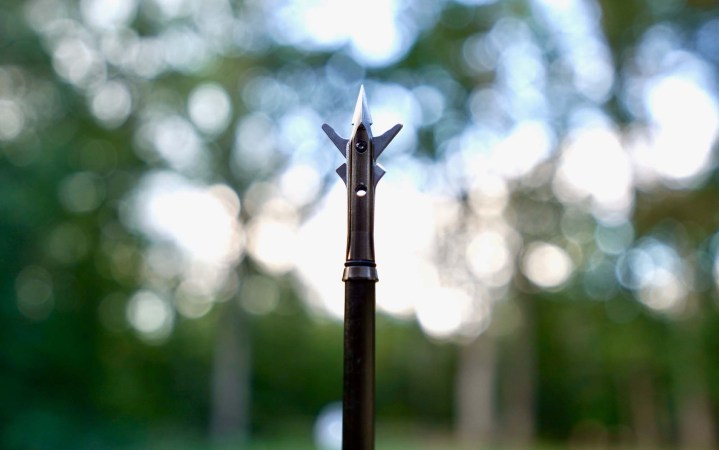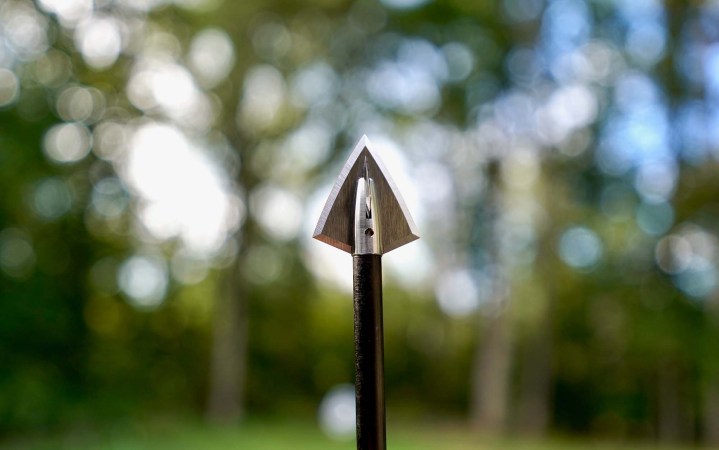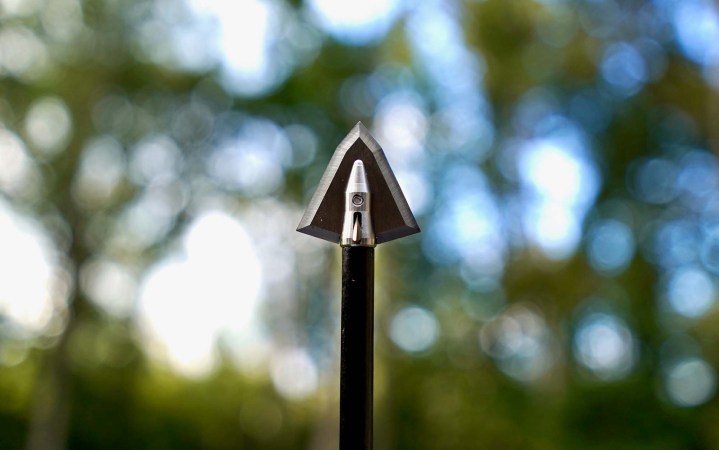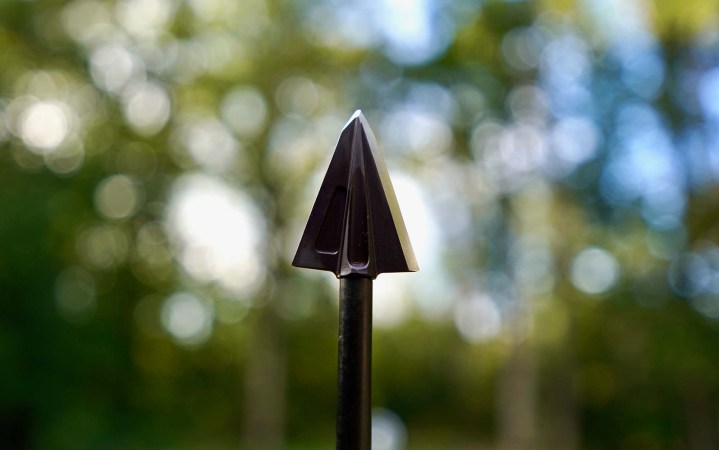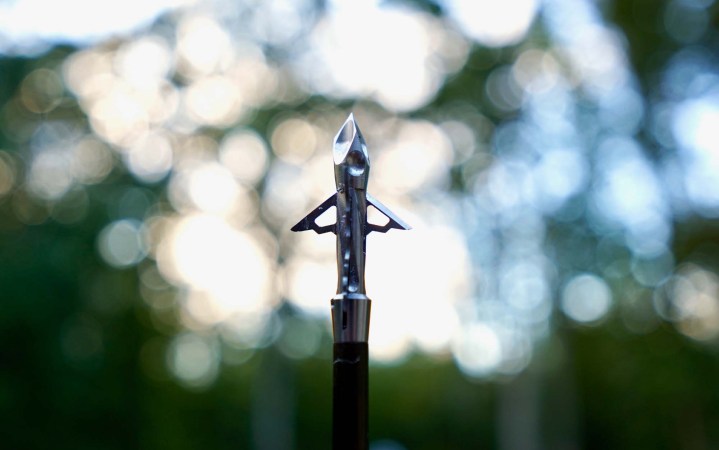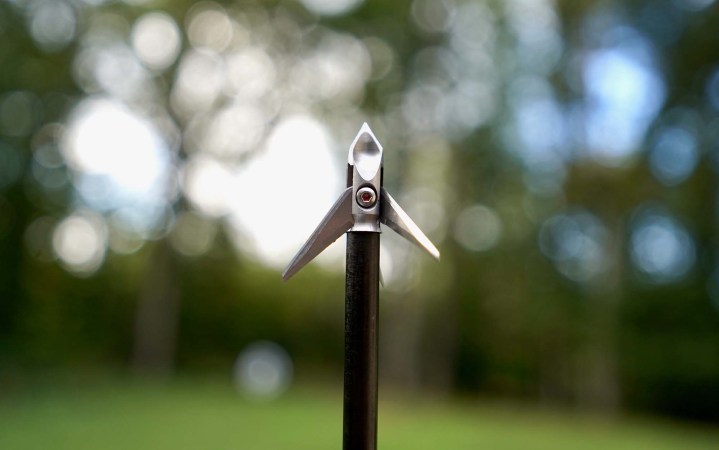We may earn revenue from the products available on this page and participate in affiliate programs. Learn More ›
After doing the hard work of getting within bow range of a deer, we all want the same thing: a passthrough, good blood trail, and that magical combination of relief and excitement when you find your deer. There are a lot of things that will lead to shorter blood trails—most importantly the archer’s skill—but a quality broadhead is also important.
With the help of Cody Greenwood of The TradLab, I tested 23 of the best broadheads and from that group I chose eight that I’d consider the best broadheads for deer. The broadheads underwent a battery of tests that included accuracy, durability, sharpness, wound channel, and a push-force measurement. My picks for best broadheads for deer did well in all the tests, but I prioritized excellent wound channels.
- Best Mechanical: G5 Deadmeat V2
- Best Budget: Magnus Black Hornet
- Most Accurate Mechanical: SEVR 2.0
- Sharpest: Day Six Evo 2
- Best Penetration: Iron Will S100
- Best Single Bevel: Cutthroat S7
- Best for Large Wound Channels: Ramcat Diamondback Hybrid
- Best Three Blade: Ramcat Hydroshock
How I Tested Broadheads
Accuracy
I shot two 40-yard groups with three of the same model broadhead. Both groups were measured with a caliper and the group average is displayed in the test results. All the heads selected as one of the best broadheads for deer had the same impact point as my field points at 40 yards.
Bow and Arrows
A 60-pound Mathews Traverse shooting 250 spine Black Eagle Rampage arrows fletched with three TAC Driver 2.75 in a helical configuration were used for the testing. The setup was bare shaft tuned prior to the accuracy test. The setup shot about 260 fps.
Wound Channel
Each broadhead was shot into a 10 percent clear ballistics gel block. The resulting wound channel was then measured with calipers and is displayed in the test results.
Push Force
Push Force is the closest thing to quantifying broadhead penetration. To do that, a digital force gauge that’s held in a test stand is used to push broadheads through different media. The force gauge measures the amount of force in pounds. The lower the poundage required to push the broadhead through, the better. In the push force test, three types of media were used: doormat, closed cell foam, and faux leather. Each media is meant to test different aspects of the broadhead and the cumulative of all three tests are displayed in the key features.
Sharpness
Sharpness was measured on an Edge-On-Up Industrial Edge Tester, which uses a fixture that holds the Double X+ media. The fixture is placed on a scale which measures the amount of force needed to cut the media in grams. The threshold for calling a broadhead sharp or not sharp was 400 grams.
Deflection
A ballistic gel block was placed at a 75-degree angle to simulate an extreme quartering shot. An aiming point was placed on the block and two high-speed cameras recorded each impact. This test was to see if a head impacted the aiming point but did not enter the gel at that point. All the heads that made the final cut passed this test.
In the Field
To give a well-rounded picture of broadhead performance, I talked to two other bowhunters who kill a lot of animals with archery equipment. Aron Snyder has tested most of the heads in our test and has killed a variety of species with them. Tyler Freel hunts with a recurve bow and has used the Cutthroat broadheads on black bear, grizzly, and caribou.
Best Broadheads for Deer: Reviews and Recommendations
Best Mechanical: G5 Deadmeat V2
Test Results
- Sharp out of the box: Yes
- Passed edge retention: Yes
- Passed durability test: Yes
- Push force: 149.45 pounds
- Measured wound channel: 2.04 inches
- 40-yard group average: 2 inches
Pros
- One of the largest wound channels
- One of the sharpest out of the package
- Comes with practice head
Cons
- Some users report premature blade deployment
The Deadmeat V2 is a rear-deploying mechanical broadhead available in 100 or 125 grains. The blades are retained by a collar, which is not reusable. You cannot practice with the heads without needing to replace the color and resharpen the blades. But, G5 does include a practice head.
In the gel test, there were only a few broadheads with over a 2-inch wound channel, and the Deadmeat V2 was one of them. “The Deadmeat is one of the most accurate and devastating mechanicals I’ve used,” Snyder said. Our testing confirmed his in-the-field experience.
Aside from the large wound channel, the Deadmeat V2 was accurate, durable, and, at 220 grams, the third sharpest. It also did the best of all the mechanicals in the push force test, despite its large cutting diameter. The blade sharpness and tip design were contributors to its ease of penetration.
When you find a broadhead that’s accurate, durable, sharp, penetrates well, and cuts a huge hole, it’s pretty obvious you have one of the best broadheads for deer.
Best Budget: Magnus Black Hornet
Test Results
- Sharp out of the box: No
- Passed edge retention: Yes
- Passed durability test: Yes
- Push force: 111.7 pounds
- Measured wound channel: 1.95 inches
- 40-yard group average: 2.75 inches
Pros
- Large wound channel
- Great price and warranty
- Easy to resharpen
Cons
- Not the highest quality steel
I get excited seeing affordable heads do well in these tests and hold their own against more expensive products. The Stingers and the Black Hornets proved that you don’t have to spend a ton of money on the best broadheads for deer. This four-blade broadhead has a 0.059-inch thick main blade. It breezed through each phase of testing and shook my expectations of a broadhead in the $40 range. It was accurate, durable, and cut a large wound channel. Magnus also has a lifetime warranty on their heads. If you bend it or break it, send in the broadhead, and they’ll replace it.
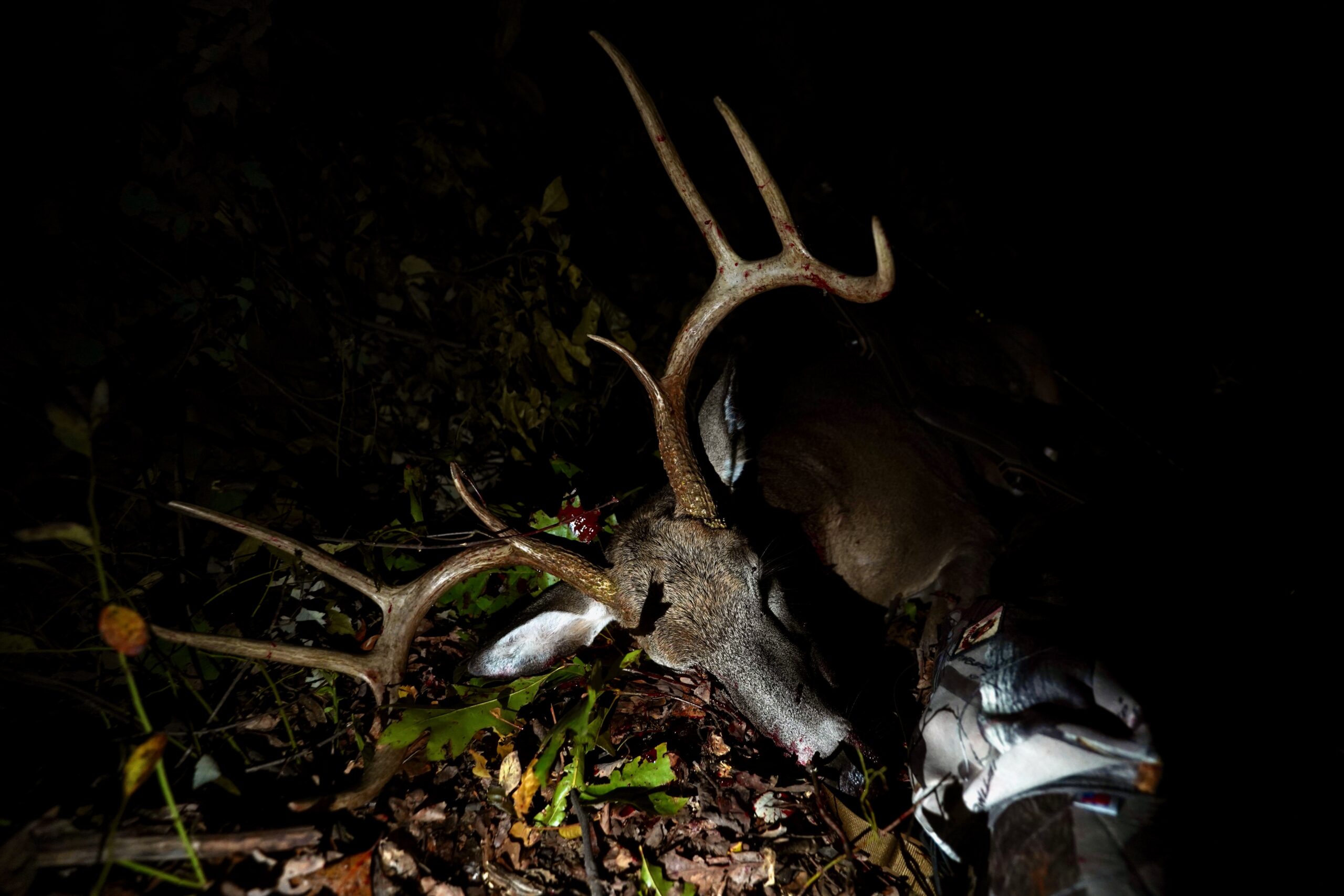
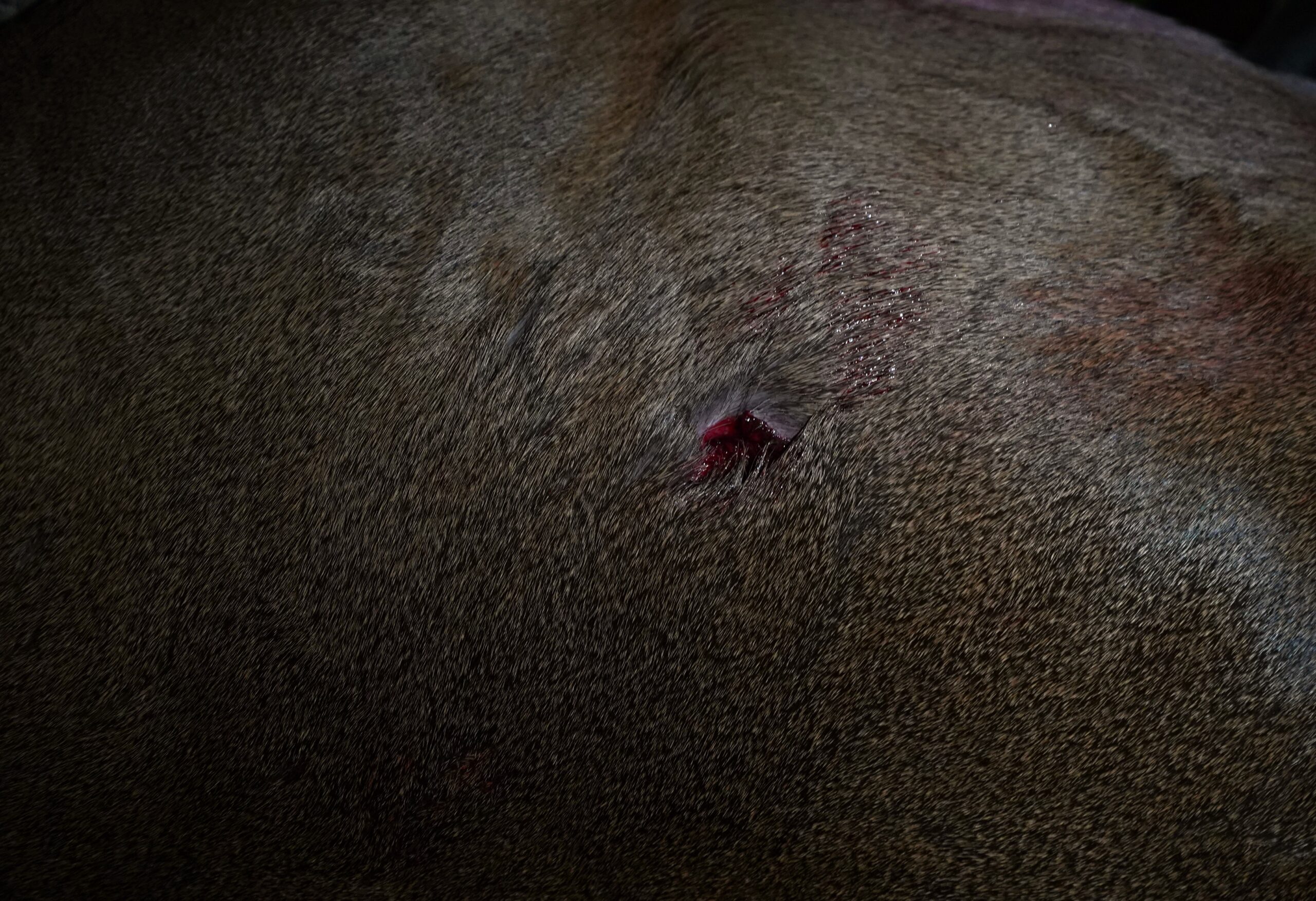
The one knock on the Black Hornet is that it needs to be touched up before you take it hunting. Two of the three heads in the test back were just above 500 grams, which is 100 grams over our sharpness threshold. But, with a light touch up they would be shaving sharp and ready to hunt. That lack of sharpness held the Black Hornet back in the push force test and you’ll see it has a high number in the edge media test, and average numbers in the other media.
I used the Magnus Black Hornet to kill my biggest buck with a recurve. I took the heads from the package and gave them a few swipes on a Rada sharpener to get them very sharp. I used a 43-pound Wengerd Ibex to make a quartering-to shot on a large-bodied whitetail. The arrow hit a few inches behind the shoulder and exited at the last rib. The arrow buried to the fletching and eventually worked its way completely through as the deer ran. The double-lung shot caused the deer to expire just 60 yards from where I shot him with a good blood trail to follow in the dark. The Black Hornet was still sharp enough to push cut paper and looked new after passing through the deer.
Most Accurate Mechanical: SEVR 2.0
Test Results
- Sharp out of the box: Yes
- Passed edge retention: No
- Passed durability test: Yes
- Push force: 172.55 pounds
- Measured wound channel: 1.5 inches
- 40-yard group average: 1.5 inches
Pros
- Accurate
- Good size entry holes
Cons
- Rattle in quiver
- Blades can deploy if pushed too hard into a quiver
The SEVR 2.0 is available in 100- and 125-grain weights. The ferrule is made from grade-5 titanium, and the blades are made from an unspecified stainless steel. The blades are rear deploying, which means it’ll cut an entrance hole. Once deployed, the blades lock together and will pivot around bone rather than cut through it, which SEVR claims helps penetration.
Another interesting feature is how easy it is to practice with SEVRs. You just have to drop in the included set screw to lock the blades together. Then clean out the target residue, replace the O-ring, and remove the set screw when you’re ready to take them hunting. Another area where the SEVR stands out is its low-profile design, which results in accuracy at extended ranges. They were the most accurate mechanical in the test at 1.25- and 1.5-inch groups. Snyder has tested the SEVRs beyond 40 yards. “I can grab any SEVR and group at 100,” he said.
In the durability test, the blades had slight wrinkling but did not bend or break. I would treat the blades as single use, but the ferrule can be reused for multiple animals. Snyder has used the SEVRs on a lot of animals with great success. “I prefer the 2.0 for most things,” he said. “They’ve had a devastating effect on animals.”

The blades rattle, and you can hear them in your quiver, but Snyder has a solution for that issue. “I put wax between the blades to reduce the rattling,” he said.
The SEVR 2.0 were sharp out of the package, but the head did not do well in the push force test. The arms that deploy the blades are not sharpened and they caused the heads to not easily penetrate the media. In his testing notes Greenwood said that if a broadhead isn’t cutting, it’s pushing and that causes significant drag.
Sharpest: Day Six Evo 2
Test Results
- Sharp out of the box: Yes
- Passed edge retention: Yes
- Passed durability test: Yes
- Push force: 57.3 pounds
- Measured wound channel: 1.5 inch
- 40-yard group average: 1 inch
Pros
- Very sharp
- Smallest groups of the test
Cons
- Some users report that the steel is brittle
Day Six Evo 100‘s four blades are made from S30V steel and come in weights from 100 to 175 grains. S30V is known as a quality stainless steel used in knife making, and it carries the same edge retaining properties in the Evo 100. S30V is known for its edge retention and corrosion resistance, but it’s also known to be brittle steel that’s prone to chip in rough use. That’s because the heat treatment required for S30V makes it hard steel. “The only downside of the Day Six is the steel can be brittle, but they’re a very good head,” Snyder said. With that said, in my durability test the Evo 100 sustained no damage, and the head looked as new. It also had the smallest groups of all the broadheads shot.
The Evo 100 was also the sharpest broadhead out of the package. It was around 150 grams, which puts it in the range of a razor blade. The reason that’s so impressive is that the Evo 100 has a much thicker blade than a razor. The Evo 100 did well in the push force test, but its bleeder-forward design required more force to push through the media than a comparable head with bleeders in the rear.
Best Penetration: Iron Will S100
Test Results
- Sharp out of the box: Yes
- Passed edge retention: Yes
- Passed durability test: Yes
- Push force: 48.3 pounds
- Measured wound channel: 1.65 inches
- 40-yard group average: 2.6 inches
Pros
- Excellent edge retention
- Durable
Cons
- Users report light blood trails
The Iron Will S100 is a four-blade broadhead made from 0.062 inch A2 tool steel and is available in weights from 100 to 250 grains. It’s a broadhead that you can rely on to stay sharp in your quiver, and even after passing through an animal they usually just require some stropping to get them ready to hunt again. Part of keeping them sharp is applying a rust preventative like Axe Wax because A2 is a carbon steel.
The S100s performed well in all of our tests, and it’s a top broadhead to consider if you’re in the market for a premium head. I hunted with the Iron Will S series for whitetails in 2020. From my recurve bows in the low 40-pound range, I had 100 percent pass-throughs on three deer, and each head still looked new. That season I also shot one deer with an Iron Will Wide, with the same result. The difference between the standard and the wide was the blood trails. The deer shot with the standard consistently had light blood trails—albeit short ones—despite good hits. The Wide had a significantly better blood trail. Snyder has used Iron Will broadheads extensively and has had similar experiences.
The Iron Will was a standout in the push force test and it was the easiest to push through all the medias. If you’re shooting a low draw weight, a recurve bow, or want a broadhead that will stay sharp throughout the season, then the Iron Will S100s should be at the top of your list.
Best Single Bevel: Cutthroat S7
Test Results
- Sharp out of the box: No
- Passed edge retention: Yes
- Passed durability test: Yes
- Push force: 49 pounds
- Measured wound channel: 1.1 inches
- 40-yard group average: 2.45 inches
Pros
- Durable
- Professional sharpening available
Cons
- Some users report light blood trails
Single bevel broadheads might be the latest craze, but RMS Gear has been making their Cutthroat heads for years. One recent update is that they’re now made from S7 tool steel. S7 is known as a durable, impact-resistant steel with a relatively low hardness, which makes it ideal for a tough and easy-to-sharpen broadhead. “They’re probably the most durable broadhead I’ve used, and I don’t know if I’ve ever ruined one,” Freel said. The cutthroats don’t come sharp out of the package, but RMS Gear will sharpen them for an additional charge.
In addition to being durable, Freel has had great success getting passthrough with his recurve. “I almost always get pass-throughs with the Cutthroat,” he said. “I shot through a bear’s scapula, and it was like it wasn’t even there.” Freel’s experience with pass throughs was also seen in its very low push force measurements.
Best for Large Wound Channels: Ramcat Diamondback Hybrid
Test Results
- Sharp out of the box: Yes
- Passed edge retention: Yes
- Passed durability test: Yes
- Push force: 146.75 pounds
- Measured wound channel: 2.25 inches
- 40-yard group average: 1.6 inches
Pros
- Wide wound channel
- Durable
- Accurate
Cons
- Tip comes loose
- No practice mode
If there was one theme in the broadhead test it’s that short heads were more accurate. One of the main reasons for that is it’s harder to manufacture a long head with good tolerances. The Ramcat Diamondback Hybrid was an exception to that trend. It shot impressive groups and had very low spin run out. I also expect longer heads to be less durable, but this head looked like new after passing through the PVC pipe.
Hybrid broadheads have the reliability of fixed blade heads with the wide cut of mechanicals. The Diamondback Hybrid had the second largest wound channel because of its four-blade design. This head has Ramcat’s concave-scoop and a single bevel fixed blade. However the single bevel on this design won’t spin while it cuts like a Cutthroat. But, that doesn’t seem to hurt the head’s performance. It also has two wide cutting mechanical blades that are secured with an O-ring. You can place that O-ring closer to the shaft or closer to the tip, depending on if you want the blades to be more secure or easier to open.
The Diamondback Hybrid also did the best of all the mechanicals in the push force test, which is surprising considering its large wound channel. At 339 grams, the blades were also very sharp.
Best Three Blade: Ramcat Hydroshock
Test Results
- Sharp out of the box: Yes
- Passed edge retention: No
- Passed durability test: Yes
- Push force: 87.9 pounds
- Measured wound channel: 1.8 inches
- 40-yard group average: 1.2 inches
Pros
- Large wound channel
- Accurate
Cons
- Swept blades can cut fingers
- Heads take up space in quiver
The Ramcat Hydroshock is a three-blade broadhead with swept, pivoting blades. The pivoting blades are important because it prevents them from being classified as barbed. Another unique feature is the double O-ring system on the ferrule which ensures a tight and concentric fit.
The Ramcasts had one of the lowest runouts and smallest groups. They also destroyed my target during accuracy testing and cut a wide wound channel into the ballistic gel. “I’ve only shot eight or nine animals with Ramcats, but I’ve seen triple that from buddies using them,” Snyder said. “They’re a very deadly and accurate broadhead.”
The blades sit back over the shaft, so if you run your arrows short you need to make sure you have riser and finger clearance. If you don’t, you’ll find out that the blades are sharp, very sharp. At 323 grams the blades were well under the sharpness threshold. The Hydroshocks weren’t a standout in the push force test, but they didn’t perform poorly either. If you’re worried about penetration, I would recommend an Iron Will or Magnus Stinger. If you want a head that will cut a big hole and penetrate well from most compound setups, then the Ramcat Hydroshocks are a great choice.
How to Choose a Broadhead for Deer
The Setup
You have to think of your bow, arrow, and broadhead as a system that works together. Each part of the system must compliment the others. For example, a wide cutting mechanical paired with a low draw weight bow and an improperly spined arrow is going to lead to poor results.
Everything is a trade off in gear selection. The Iron Will S100 penetrates better than any head, but it has a relatively small wound channel. The SEVR 2.0 is accurate and cuts a big hole, but you need to be shooting enough energy to get it to pass through.
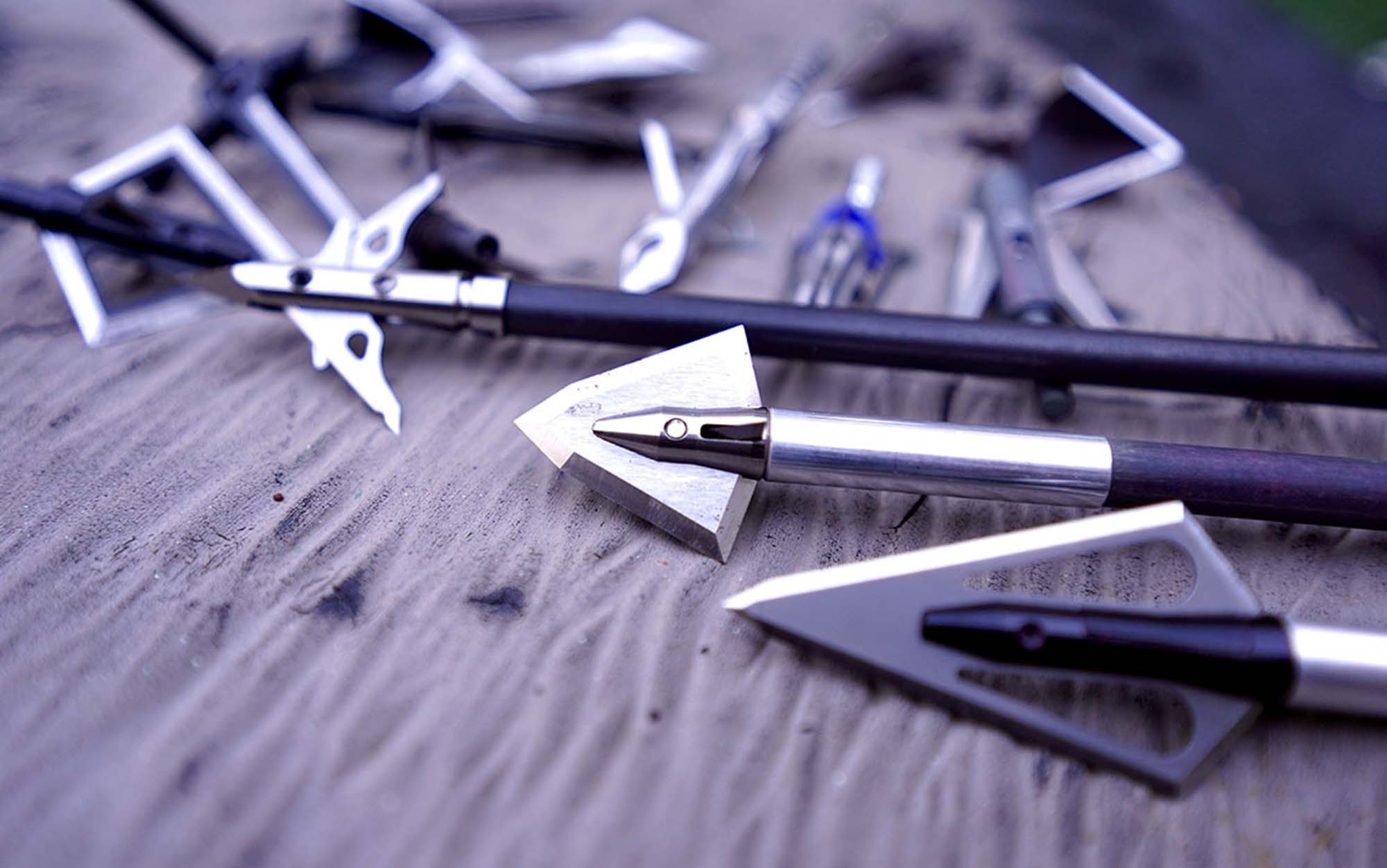
Fixed Blade vs. Mechanical Broadheads
This debate is as old as the invention of mechanical heads. I’ll make it simple. If you’re shooting a compound bow over 50 pounds, an arrow weight around 450 grains, and you are not confident in your tuning ability, shoot one of the quality mechanicals on the best broadheads for deer list. If you’re under 50 pounds or shooting a recurve, shoot a fixed head. If you can tune a bow and are shooting over 50 pounds, you can shoot whatever makes you happy.
FAQs
Mechanical broadheads are more accurate than fixed blade heads if your bow isn’t tuned. At extended ranges they will have less drag and wind drift than fixed heads.
Broadheads are not more accurate than field points.
The broadhead style you choose depends on your bow and arrow setup. A fixed blade is more durable, better penetrating, and longer lasting than a mechanical. But, mechanicals are easier to shoot accurately and have large cutting diameters.
Final Thoughts
No test will replicate every deer hunting scenario, but I hope this test provides you with enough data that you can make an educated decision on what broadhead is best for you. Ultimately, the best broadhead for deer hunting is the one that shoots the best from your setup.
